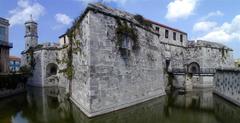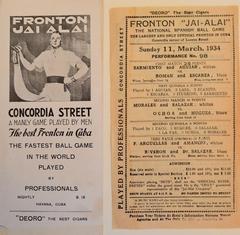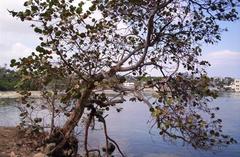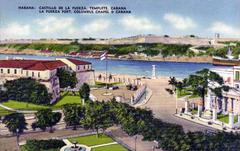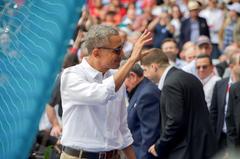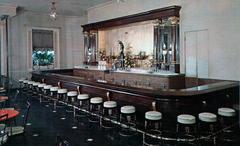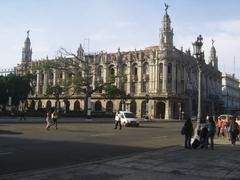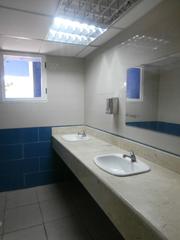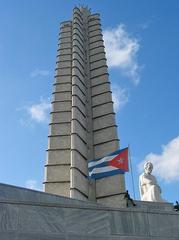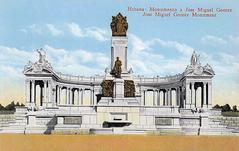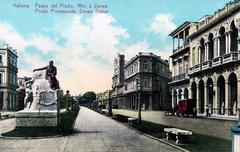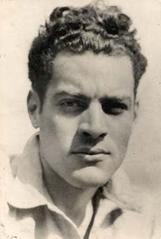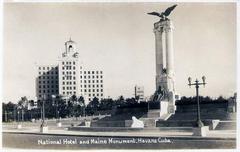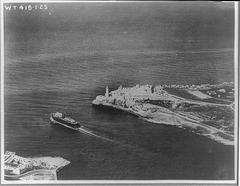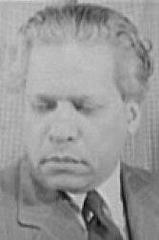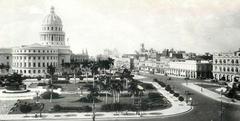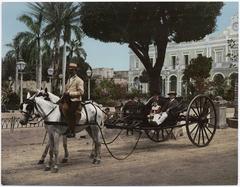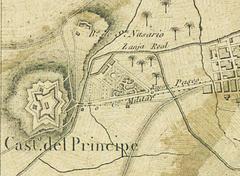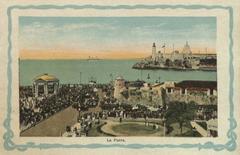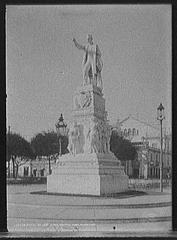National Art Schools Havana: Visiting Hours, Tickets, and Comprehensive Guide
Date: 04/07/2025
Introduction: Discovering the National Art Schools in Havana
The National Art Schools (Escuelas Nacionales de Arte, ENA), now part of the Instituto Superior de Arte (ISA), stand as a monument to Cuba’s revolutionary vision and artistic ambition. Conceived in 1961 by Fidel Castro and Che Guevara, this campus in the Cubanacán district of Havana transformed the former Havana Country Club into an inclusive space dedicated to plastic arts, modern dance, ballet, music, and dramatic arts. The schools are celebrated not only for their cultural impact but also for their innovative architecture, blending local materials with organic forms that harmonize with the landscape.
Today, the National Art Schools are both a living educational institution and a site of global architectural significance, attracting visitors interested in Cuban history, revolutionary ideals, and modernist design. This guide provides a detailed overview of the schools’ history, architectural features, current status, visiting hours, ticketing, and practical visitor information.
For further insight, authoritative resources such as Eastern Engineering Group, LitHub, and the RIBA Journal provide extensive background and analysis.
Table of Contents
- Origins and Historical Context
- Architectural Vision and Design
- The Five Schools: Highlights
- Visiting Hours, Tickets, and Tours
- Practical Visitor Information
- Restoration and Conservation
- Cultural Importance and Events
- Nearby Attractions and Suggested Itineraries
- FAQs
- Summary and Visitor Tips
- References
Origins and Historical Context
Established in the wake of the Cuban Revolution, the National Art Schools were a bold experiment in democratizing arts education. The project was launched in 1961, with the aim of transforming a symbol of privilege into a beacon of cultural inclusion. Construction began on the grounds of the former Havana Country Club, and the campus quickly became a hub for five artistic disciplines: Modern Dance, Visual Arts, Dramatic Arts, Music, and Ballet (Eastern Engineering Group). Despite the halting of construction in 1965 due to shifting political priorities and economic hardships, the schools persevered and merged into the ISA in 1976, cementing their role as Cuba’s premier arts institution.
Architectural Vision and Design
The architectural team—Cuban Ricardo Porro and Italians Vittorio Garatti and Roberto Gottardi—rejected both colonial and Soviet models, instead embracing organic forms and traditional techniques that reflected Cuba’s identity and resourcefulness.
Key Architectural Principles:
- Integration with Landscape: The campus follows the undulating terrain of the former golf course, weaving buildings into the natural environment (RIBA Journal).
- Use of Local Materials: Brick, terracotta, and ceramic tiles were chosen both for their availability and their aesthetic resonance with Cuban culture (ArchDaily).
- Catalan Vault Technique: This construction method enabled the creation of self-supporting domes and curved ceilings, giving the campus its distinctive appearance (Eastern Engineering Group).
The result is a series of flowing, interconnected spaces that blur the boundaries between indoor and outdoor, art and nature.
The Five Schools: Highlights
Each school on the campus has its own architectural personality, reflecting both the discipline it houses and the vision of its designer:
- School of Visual Arts (Ricardo Porro): Features oval pavilions and communal courtyards, fostering interaction and creativity.
- School of Modern Dance (Ricardo Porro): Open studios and fluid forms evoke movement and connection with the outdoors.
- School of Ballet (Vittorio Garatti): Interlocking domes and spiral walkways provide dramatic rehearsal and performance spaces (Divisare).
- School of Music (Vittorio Garatti): Winding corridors follow a small river, creating acoustically rich practice areas that connect to the landscape.
- School of Dramatic Arts (Roberto Gottardi): Fortress-like structure centered on an amphitheater, designed for immersive theatrical experiences.
Visiting Hours, Tickets, and Tours
Visiting Hours:
- Generally open to pre-arranged tours Monday to Friday, 9:00 am–4:00 pm. Hours may vary due to academic schedules and restoration work (Classicist.org).
- Walk-in visits are not permitted; advance booking is required.
Tickets and Booking:
- Tickets are typically part of guided tours, not sold separately at the site.
- Book through reputable tour operators or by contacting the ISA directly (Authentic Cuba Tours; Colibri Travel Tours).
Guided Tours:
- Highly recommended for in-depth understanding.
- Tours may include access to student workspaces, architectural highlights, and ongoing restoration areas.
- Some tours offer opportunities to attend student exhibitions or performances (Alandis Travel).
Practical Visitor Information
- Location: Calle 120, Cubanacán, Playa, Havana, Cuba. About 12 km from Old Havana.
- Access: Best reached by taxi or organized tour; public transport is limited.
- Dress: Comfortable shoes and light clothing recommended.
- Photography: Permitted in outdoor areas and some interiors; always request permission before photographing students or classes.
- Facilities: Limited; bring water and essentials.
- Accessibility: Uneven terrain and historic structures may pose challenges for visitors with mobility issues (Authentic Cuba Tours; Havana Music School).
Restoration and Conservation
After decades of neglect and partial abandonment, restoration efforts are ongoing with support from the Cuban government, World Monuments Fund, Getty Foundation, and international partners (Cuban Art News). Some buildings remain in a precarious state and may be inaccessible. The semi-ruined condition of certain areas adds to the site’s evocative atmosphere (Messy Nessy Chic).
Cultural Importance and Events
The schools have produced generations of Cuban artists and serve as a symbol of revolutionary ideals—accessibility, creativity, and cultural integration. They have been declared a National Monument (2010) and listed on UNESCO’s World Heritage Tentative List (2003). Occasional cultural events, exhibitions, and student performances enhance the visitor experience (LitHub; RIBA Journal).
Nearby Attractions and Suggested Itineraries
Consider combining your visit with nearby Havana sites:
- Old Havana (Habana Vieja): Colonial architecture and vibrant street life.
- Malecón: Havana’s iconic seaside promenade.
- Plaza de la Revolución: Political and historical landmark.
- Miramar District: Embassies and mid-century modernist architecture.
- Fusterlandia: Colorful mosaic art project in Jaimanitas (Alandis Travel).
Architecture tours often include the National Art Schools, Old Havana’s squares, Bacardi Building, and other modernist sites for a comprehensive experience (Colibri Travel Tours).
Frequently Asked Questions (FAQ)
Q: How do I arrange a visit?
A: Arrange through tour operators or contact ISA directly. Walk-ins are not allowed.
Q: What are the visiting hours?
A: Monday to Friday, 9:00 am–4:00 pm (pre-arranged tours only).
Q: Are tickets sold on site?
A: No. Tickets are included in guided tours; advance booking is essential.
Q: Is the site accessible for visitors with disabilities?
A: Accessibility is limited due to uneven terrain and historic structures.
Q: Is photography allowed?
A: Yes, in most outdoor and some indoor areas, but ask before photographing students or classes.
Q: Can I see student performances or exhibitions?
A: Some tours offer this opportunity, depending on the academic calendar and special events.
Summary of Key Points and Visitor Tips
- Plan Ahead: Advance booking through tour operators or ISA is required.
- Guided Tours: Essential for deeper understanding of history and architecture.
- Dress Appropriately: Comfortable, sturdy footwear and sun protection are recommended.
- Respect the Space: The schools are active educational institutions.
- Check Restoration Status: Some areas may be inaccessible due to ongoing work.
- Combine Visits: Pair with other Havana landmarks for a richer experience.
- Stay Informed: Download the Audiala app for up-to-date visitor info and interactive maps.
References and Further Reading
- Eastern Engineering Group
- LitHub
- RIBA Journal
- Travellers Worldwide
- ArchDaily
- Cuban Art News
- Messy Nessy Chic
- Divisare
- Authentic Cuba Tours
- Colibri Travel Tours
- Alandis Travel
- Classicist.org
- Havana Music School
Experience Cuba’s revolutionary spirit and artistic ingenuity at the National Art Schools in Havana—a living testament to inclusivity, creativity, and resilience. Plan your visit, immerse yourself in the vibrant arts scene, and explore the architectural marvels that continue to inspire the world.

